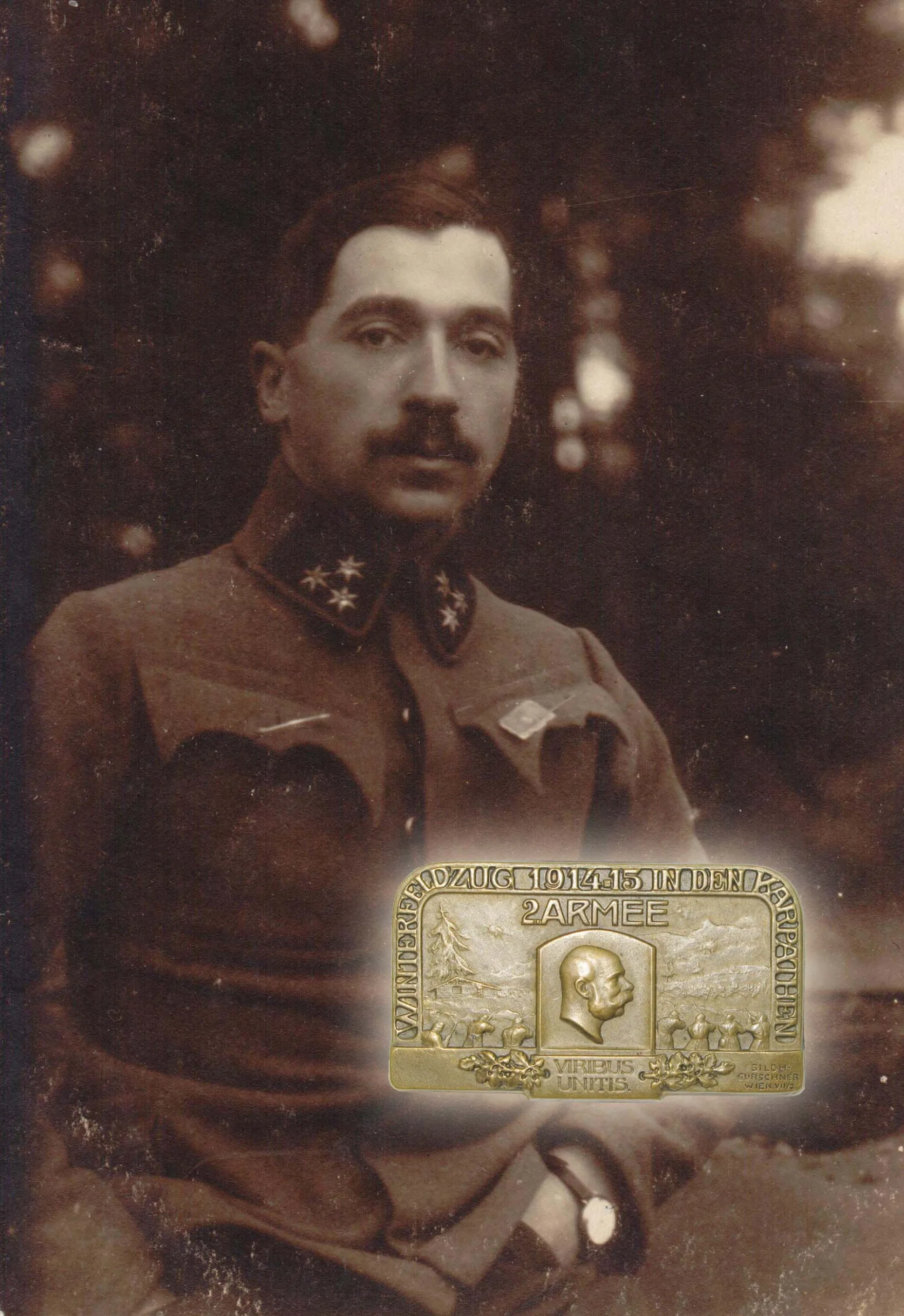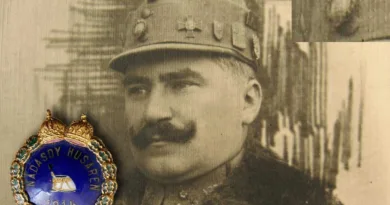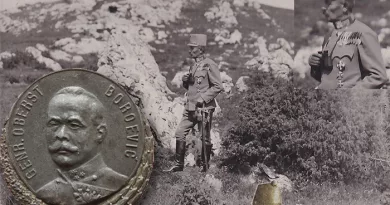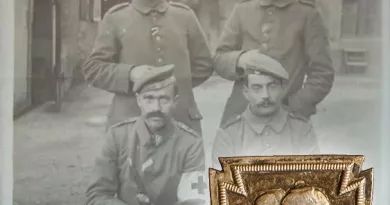2nd Army
Cap badges gradually became fashionable from early 1915. At first, the main role was played by propaganda badges. These were complemented by a few pieces made directly for the front soldiers. These were made mainly for higher units, corps and armies. One such early badge was that of the 2nd Army. The inscription on the badge and the image on it also evoke the events of the “Battle of the Carpathians” that took place in the winter of 1914-15.
As is well known, from about November 1914 to May 1915, Russian forces occupied the forecourt of the Carpathians, in a semicircle from Krakow to the Romanian border. They managed to break into the passes of the mountains in several places. The struggle was largely in the winter conditions in this mountainous terrain. The fighting and the harsh weather conditions (that winter was especially cold in that year) put a heavy burden on the defenders. Regiments decimated by frost and disease were often completely shattered in Russian attacks. The 3rd Honvéd Infantry Regiment of Debrecen, for example, had to be reorganized at the end of the winter in 1915 due to the losses it had suffered.
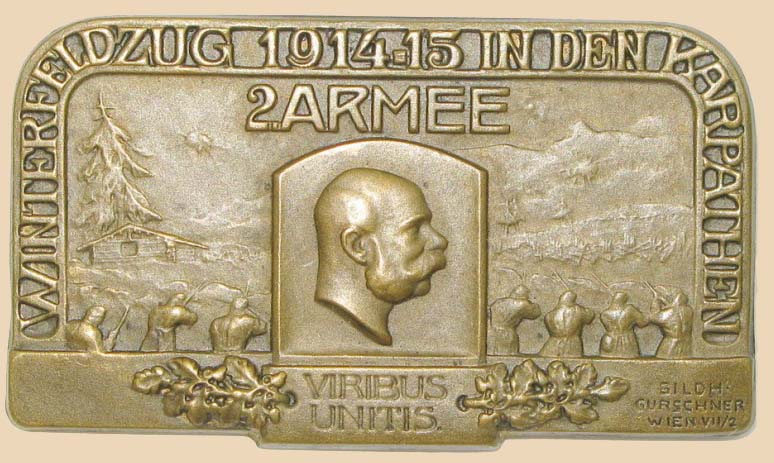
The defense line of the Carpathians was maintained by the Austro-Hungarian 2nd and 3rd armies against Russian attacks. The beautiful Kappenabzeichen of the 2nd Army perpetuated this heroic struggle. Soldiers standing in the trenches await the enemy’s attack with a rifle aimed at them. Artillery shrapnel explodes in the air. Dense wire obstacles in front of the trenches slow down the momentum of the assailants. In the middle is a portrait of the ruler on the beautifully shaped badge of the Gurschner company. Like the badges of the higher units in general, also this one was made in large numbers. It is still easy to get it today. The interesting thing about the picture is that the corporal put the badge on the jacket pocket.

